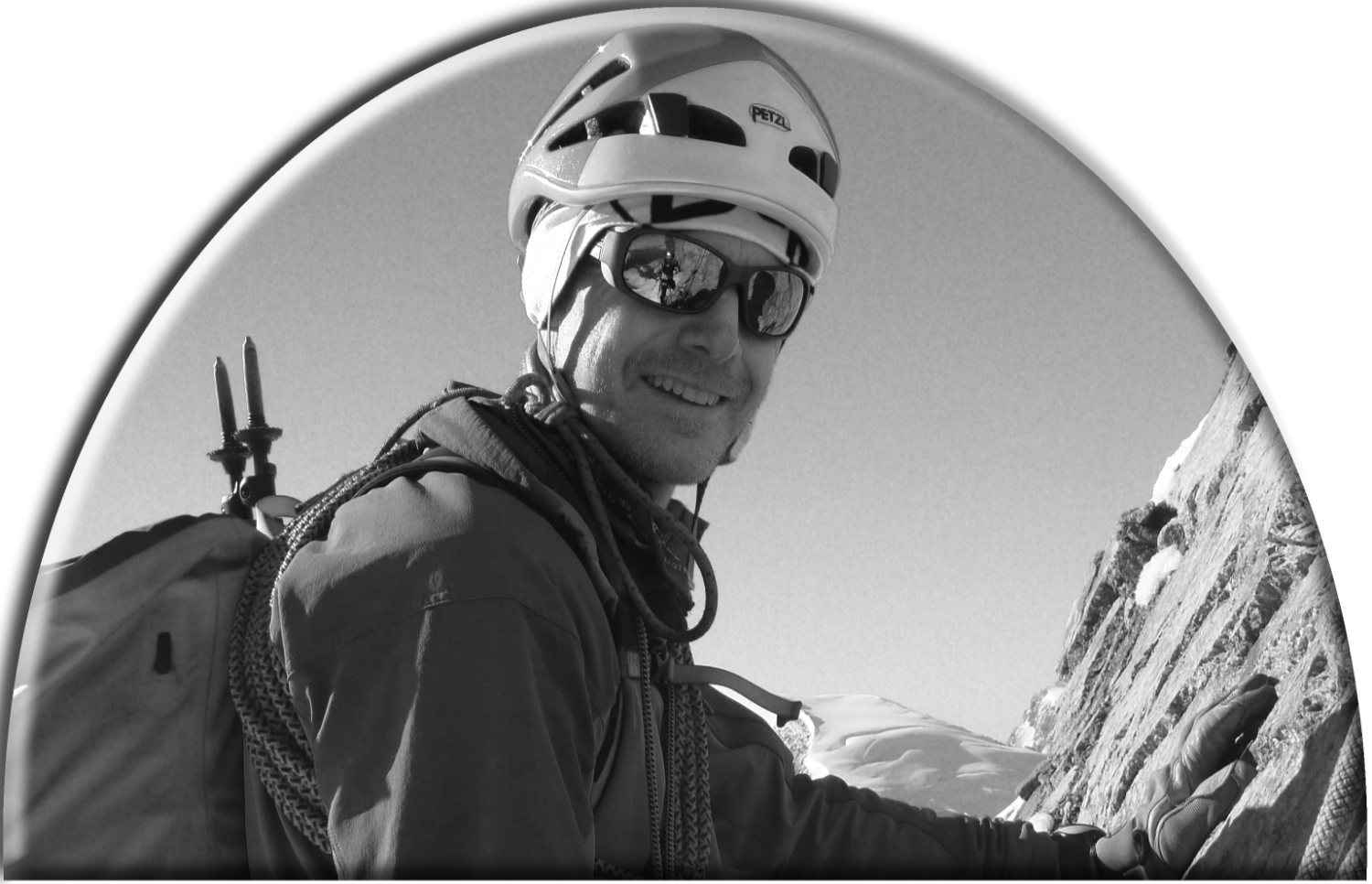Day 23 - Monday 6th August
Headed up to the Martin Busch Hütte (2,501m) in order to climb the Similaun, 3,606m. It's a nice simple glacier climb to a popular summit. Described as a classic of the region and not to be missed. Who are we to turn up our noses at such glowing recommendations. We will go up to the hut from Vent, stay overnight, climb the mountain and out in a day. We left Vent at 11am, not exactly an Alpine start, for the 2 1/2 walk up 600m to the hut. It is VERY hot. Our bags are VERY heavy and on arrival at the hut our legs feel like lead. This does not bode well for our 3am alarm call and 9-10 hour day tomorrow.
We left Vent at 11am, not exactly an Alpine start, for the 2 1/2 walk up 600m to the hut. It is VERY hot. Our bags are VERY heavy and on arrival at the hut our legs feel like lead. This does not bode well for our 3am alarm call and 9-10 hour day tomorrow. A storm comes in shortly after our arrival. The wind picks up, the clouds build very quickly. Big but short lived storm with heavy rain and huge claps of thunder rolling back and forth across the valley. Smug dry people watch as wet miserable people scurry towards the hut from the direction of Vent. By way of revenge wet miserable people make a concerted effort to hang their dripping clothing and kit directly over dry smug people's boots.15.00 retired to bunk room to snooze. Feeling a bit rough. Touch too much sun yesterday perhaps.
A storm comes in shortly after our arrival. The wind picks up, the clouds build very quickly. Big but short lived storm with heavy rain and huge claps of thunder rolling back and forth across the valley. Smug dry people watch as wet miserable people scurry towards the hut from the direction of Vent. By way of revenge wet miserable people make a concerted effort to hang their dripping clothing and kit directly over dry smug people's boots.15.00 retired to bunk room to snooze. Feeling a bit rough. Touch too much sun yesterday perhaps. We have worked out the 'cheap' way of staying at huts. We don't have the half-pension (evening meal and breakfast). Which is around €28 - €32 each. We carry extra food for our breakfast and eat the Bergsteigeressen at an affordable €9 or thereabouts. The accommodation element of our stay is relatively inexpensive as we are members of the Austrian Alpine Club. (We are happy to be members of any club that gets us a decent discount.) This means that a bed for the night costs only €12 each (huts vary with the most we have paid being €17).At some point I will explain the hut system. It takes some getting used to with each hut having different 'ways.'Amusing anecdote time:
We have worked out the 'cheap' way of staying at huts. We don't have the half-pension (evening meal and breakfast). Which is around €28 - €32 each. We carry extra food for our breakfast and eat the Bergsteigeressen at an affordable €9 or thereabouts. The accommodation element of our stay is relatively inexpensive as we are members of the Austrian Alpine Club. (We are happy to be members of any club that gets us a decent discount.) This means that a bed for the night costs only €12 each (huts vary with the most we have paid being €17).At some point I will explain the hut system. It takes some getting used to with each hut having different 'ways.'Amusing anecdote time:
- Mr P wants to write our names in the hut book (visitors book) but there is no pen.
- Mr P to Mrs P our resident expert in the local lingo: "What is the German for 'pen'?"
- Mrs P, who is clearly not the expert I had hoped replied: "I don't know."
- Mr P looks it up in dictionary. Mr P looks confused. Verb this adjective that, noun the other.
- Mr P shows Mrs P the definitions and Mrs P confidently declares it to be:
n: Federhalter; Feder;
- "I'm pretty sure it's 'feder'" she says. "Ask for a feder."
- Mr P asks the nice man for a "feder" to write in the book.
- The man looks at Mr P as though he is a bit strange.
- Mr P mimes the internationally recognised symbol for 'writing' which involves holding finger and thumb together and waving them frantically at the man whilst simultaneously pointing vaguely in the direction of the book and saying "pen" very slightly too loudly in English.
- The penny drops. Mr P gets a pen.
- We look up the meaning of the word 'feder.' It means 'feather' with 'federhalter' being a quill pen.
- Mrs P laughs
- Mr P does not
This may not be an opinion shared universally amongst Team P members but Mr P thinks Mrs P just chose the first one on the list
- Mr P sees the man he misguidedly asked for feather whispering to his colleague, pointing in our direction and sniggering.
- Mr P looks up the German for; "There'll be no tip for you my good man
FYI: The German for pen is KugelschreiberNot to be confused with Kugelschieber which is a ballcock!I'm off to learn Japanese. It's easier:Watashi wa nattō ha sukide wanai
